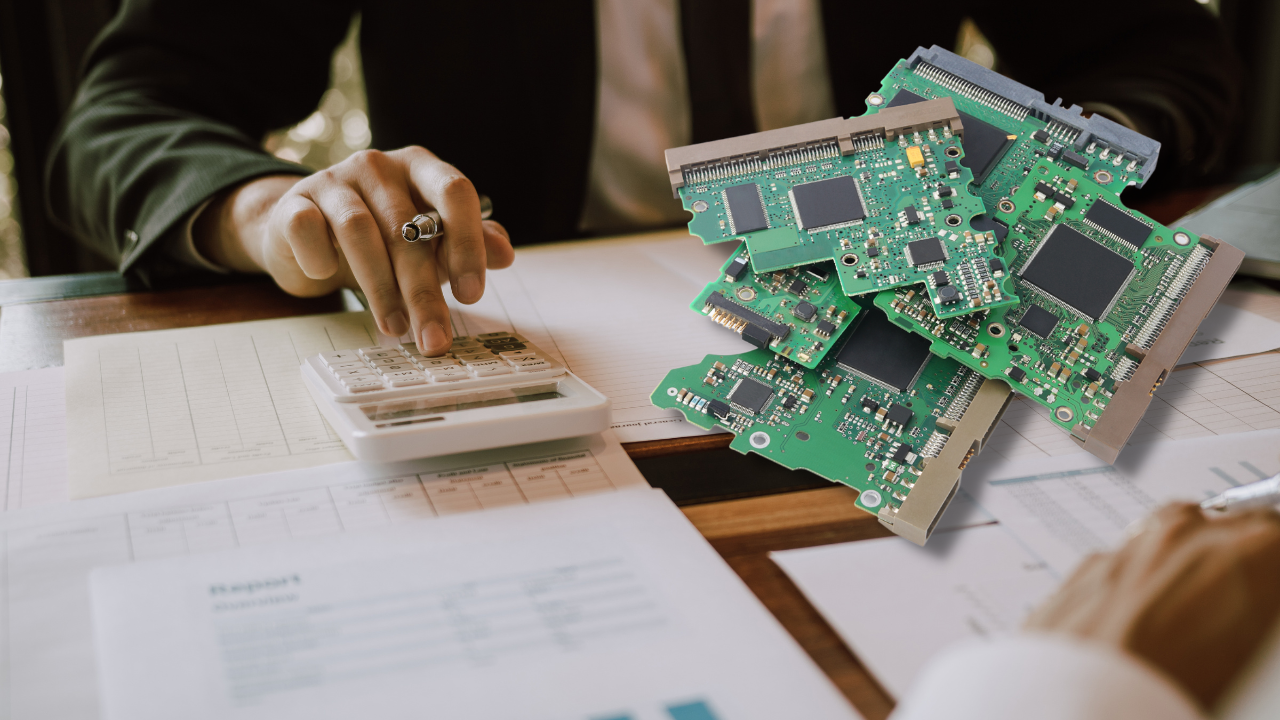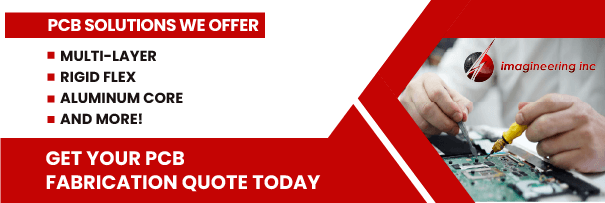Printed circuit boards, otherwise known as PCB, have become central in the manufacturing of numerous electronic devices. Even though they have been around for many years, PCBs continue to get smaller and more powerful.
Furthermore, PCBs are incredibly diverse, so finding one to meet your needs has become more complex over the years. That means working with an expert who can help you, but how much should you expect to pay. Knowing these factors ahead of time will allow you to budget accordingly, work with the right supplier, and put your business in the best position for success.
Pricing Factors That Impact the Cost of PCB Fabrication
At Imagineering, we have a convenient CPQ online that can help you manage your pricing! Some of the most important factors that will influence the cost of your PCBs include:
The Overall Size of Your PCBs
Printed circuit boards come in a wide variety of sizes, often impacted by the number of layers that you have. Generally, the more layers a PCB has, the more expensive it will be to fabricate. This is because adding layers to a PCB increases the complexity of the manufacturing process, which in turn increases the cost.
- A single-layer PCB, also known as a single-sided PCB, is the most basic type of PCB. It consists of a single layer of conductive material, typically copper, on one side of an insulating substrate, such as fiberglass or plastic. These are the cheapest PCB to fabricate and widely used in simple electronic circuits.
- A double-layer PCB, also known as a double-sided PCB, has conductive material on both sides of the insulating substrate. This allows for more complex circuit designs, but also increases the cost of fabrication. These are widely used in consumer electronic devices and appliances.
- A multi-layer PCB has conductive material on multiple layers, stacked on top of each other with insulating layers between them. This allows for even more complex circuit designs, but also significantly increases the cost of fabrication. Multi-layer PCBs are widely used in high-end electronic devices and critical applications such as aerospace, medical, and military.
The Thickness of Your PCBs
The thickness of your PCBs will play a role in the price. PCB thickness can affect the overall physical size of the device, as well as the weight, flexibility, and thermal dissipation. Here are some of the most common thicknesses of PCBs:
- 1.6mm: This is a standard thickness for single-sided and double-sided PCBs, it provides a balance between mechanical strength, thermal dissipation, and cost.
- 1.2mm: This thickness is commonly used for double-sided and multi-layer PCBs, it allows for a smaller form factor and lightweight designs, but also demands more precision in the manufacturing process.
- 0.8mm: This thickness is used in high-density designs, such as in high-end smartphones, laptops, and other portable devices where space is limited and weight is a concern.
- 0.6mm: This thickness is used in applications where size and weight are critical, such as in small medical devices, wearable technology and compact electronic devices.
- 2.0mm and above: These thicknesses are more common in industrial and military applications, where the PCB is exposed to harsh environments, and a high mechanical strength is needed.
At Imagineering, the thickness of a PCB can also be customized to meet specific design requirements, however, the thickness of the PCB will be a trade-off weighing various factors against cost.
We understand that you are on a tight budget, and that is why we offer specials from time to time! Take a look at them, and do not hesitate to reach out to us with any questions!
The Number of PCBs You Need
If you are looking for a way to reduce the cost of your printed circuit boards, planning is essential. Even though it is true that you will have to pay more money if you want to order more PCBs, it is also true that you might be able to reduce your overall cost if you order them in bulk.
If you have a specific printed circuit board that you need, work with a company that can produce a prototype. After the prototype has been produced, it is relatively easy to duplicate them which is where bulk ordering may be helpful.
The Turnaround Time of the Order
If you need to get your printed circuit boards completed as quickly as possible, the price might go up. That is because manufacturers will have to put other orders on hold to move yours to the front of the line. You should expect to get a higher price quote if you need the order completed quickly.
This is why proactive planning is key if you are looking to reduce or minimize unnecessary costs. If you give the manufacturing team plenty of lead time, they do not have to worry about bumping other orders or paying their workers overtime to get your order finished.
The Customizations Included in Your PCBs
If you ask for printed circuit boards that have a lot of customizations, this often has an effect on the cost. That is because special equipment, more manpower, and more time will be needed to include the customizations in your PCBs.
While Imagineering does not do any design work, we can help you if you have a design that has already been created. We can work with you to customize your PCB to meet your needs.
The Shipping Cost and Manufacturing Location
Once your order is finished, the manufacturing team has to get it to you. You will have to cover the cost of shipping one way or another, and there are a number of factors that will play a role in how expensive it will be to ship your PCBs. They include:
- The total distance the order has to travel to make it to you
- How quickly you want to receive the order
- The packaging materials used to protect your order as it travels to the final destination
Remember that PCBs are fragile, and they must be protected in transit. This will add to the overall cost of the manufacturing process. If you decide to partner with Imagineering, we will cover the shipping cost!
The Materials Used To Make Your PCBs
Finally, the materials used to make your printed circuit boards will also influence the price. Some of the most common materials used to make PCBs include:
- Solder
- Polymer inks
- Fiberglass
- Gold
- Silver
- Copper
Each material plays a different role. Some of these materials have mechanical properties that are essential to the function of the board, while other materials are used to increase the thermal reliability of your PCBs. Some materials are more expensive than others. For example, gold and silver might be needed to make your PCBs, but they are also more expensive than copper.
Work With Imagineering for All of Your Printed Circuit Board Needs
These are just a few of the many factors that will influence the cost of your order. But before you decide on a PCB manufacturer, it is important to consider other factors outside of cost. These may include:
- Quality and reliability: A good PCB manufacturer should have a proven track record of producing high-quality, reliable boards. Check for certifications such as ISO 9001, IPC-A-600 and IPC-6012, which indicate that a manufacturer follows industry standards for quality and reliability. Also, check for any customer feedback and reviews to see the experience of other customers with them.
- Manufacturing capabilities: The manufacturer should have the necessary equipment, experience and skills to produce your PCB design.
- Lead time and delivery: PCB manufacturing can be a time-consuming process, and you’ll want to make sure the manufacturer can deliver your boards within your required timeframe.
- Communication: Look for a manufacturer with a good communication system, it helps to maintain transparency during the entire process and avoid any unexpected delays.
- Post-sales services: Some manufacturers offer additional services such as testing and assembly, also consider if any warranties or guarantees are offered after the delivery.
If you are looking for a company that has the expertise necessary to produce your printed circuit boards within your budget, look no further than Imagineering. We have a tremendous amount of experience producing a wide variety of PCBs, and it would be our pleasure to help you as well.
A member of our team can work with you to customize your PCBs to meet your needs, and we have plenty of options available to ensure we work within your budget. We will keep you updated every step of the way, and we will ensure you are satisfied with the final result. Contact us today to speak to a member of our team, and let us help you with your upcoming project.


